11 Fantastic Flowers That Start with F + Growing Guide Charts

This post follows our research editorial guidelines.

Have you ever wondered how a touch of floral magic could transform your garden or grove into an enchanting paradise? Well, wonder no more! Fabulous flowers that start with F are the secret to creating outdoor spaces that burst with color, fragrance, and life. Whether you’re drawn to the vibrant allure of full blooms or the delicate charm of more elusive favorites, these blossoms have been captivating gardeners for generations.
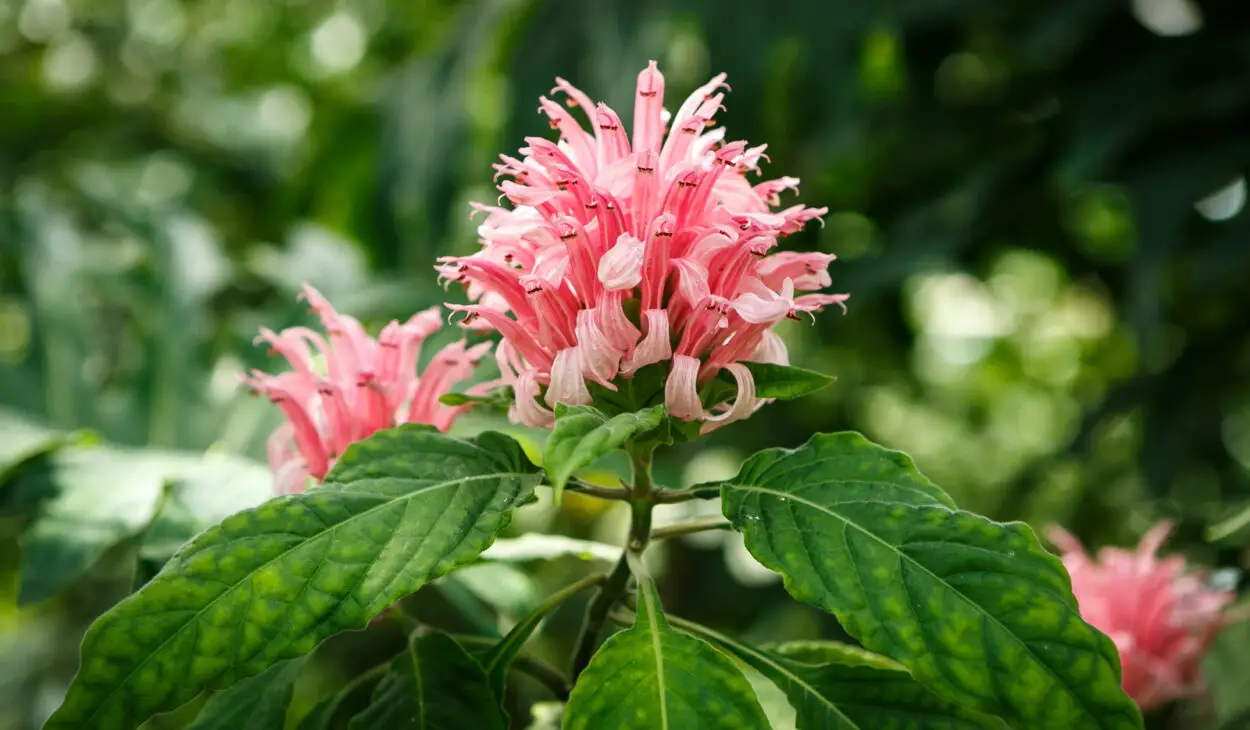
I’m forging forwards along my file of favorite flowers, in alphabetical order. We’ve found the letter ‘f’. Fantastic! So, let’s roll up our sleeves and dig into the magic of blossoms that will make your garden dreams come true.
Quickly Find Flowers That Start With F
1. Fan flower (Scaevola aemula)
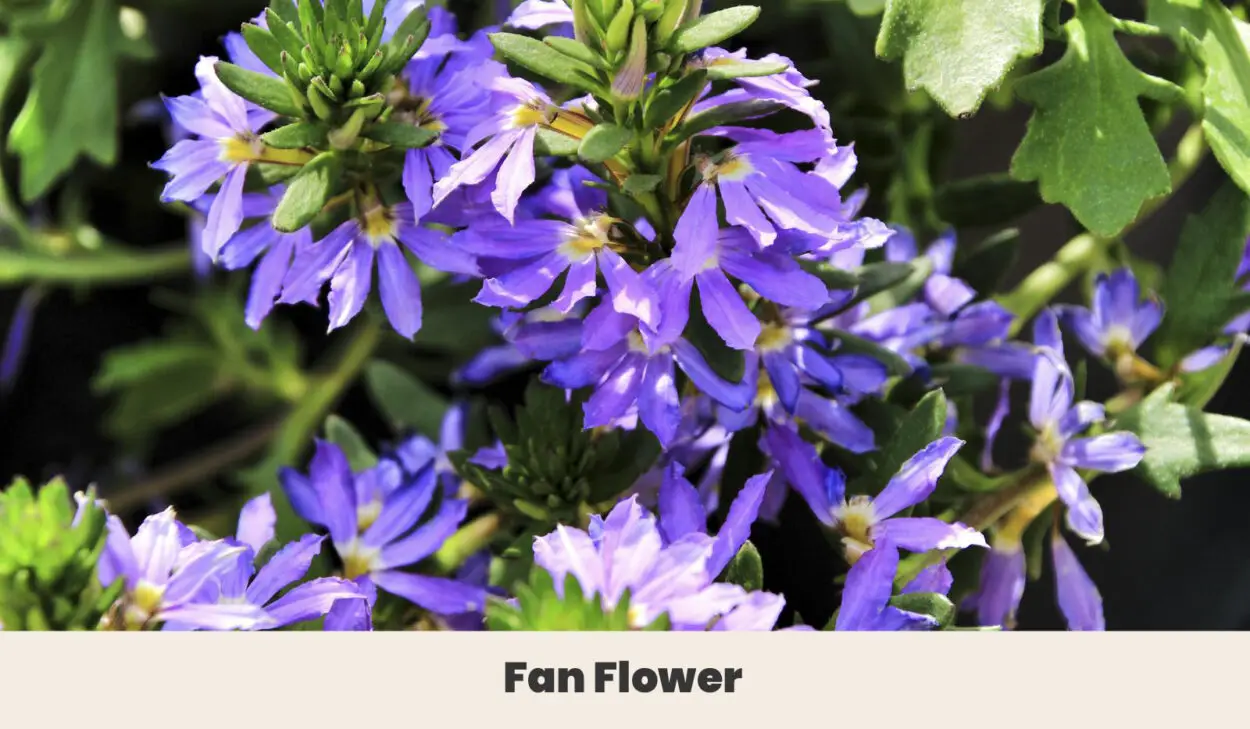
The fan flower is an Australian native with delicate fan-shaped blooms in shades of purple and blue, just as the name suggests. They’re a sprawling ground cover that does well in baskets or other containers, tumbling over the edge to cascade in spectacular profusion.
Fan flowers are tropical; specialists, so you’ll need to bring them inside as the weather becomes cold. They will do just fine if their light needs are met.
| Botanical Name: | Scaevola aemula |
| Growth Rate: | Moderate |
| Native Range: | Dry regions of Australia |
| Hardiness Zones: | 10 to 11 |
| Soil Needs: | Free-draining soils of most types |
| Exposure: | Partial shade |
| Blooming Period: | Summer to fall |
2. Feverfew (Tanacetum parthenium)
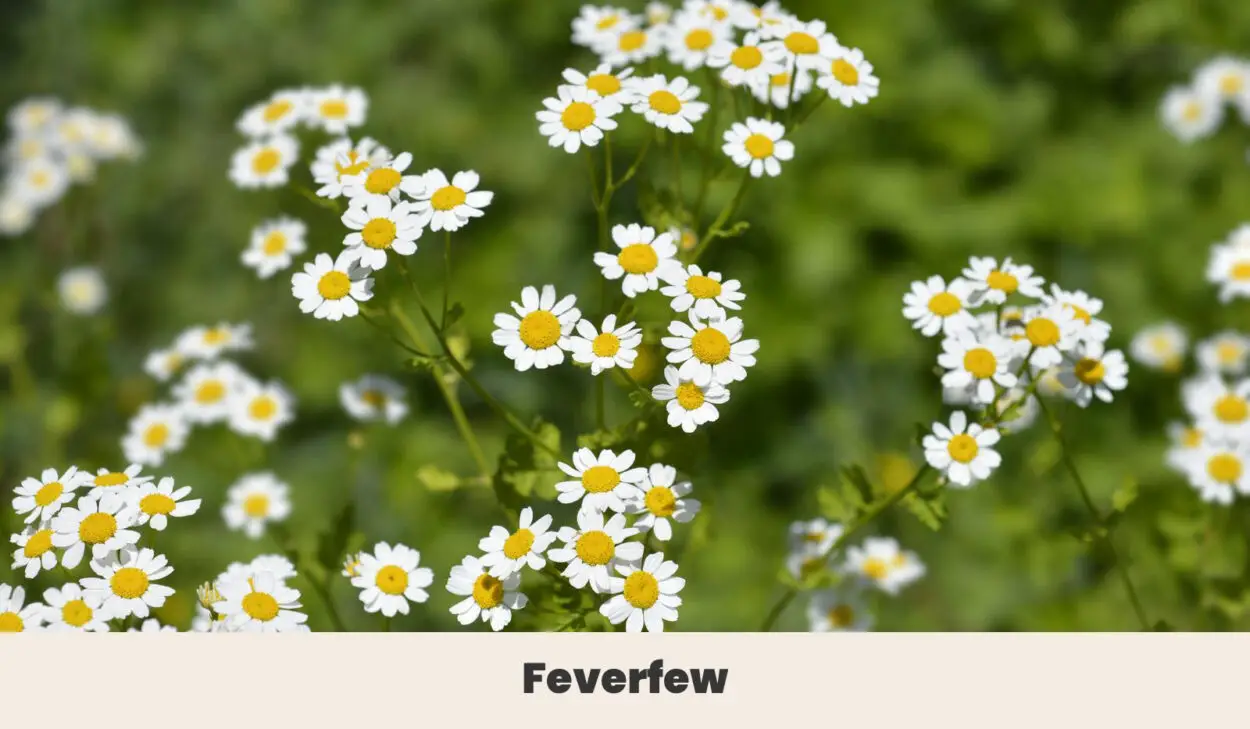
Feverfew is a classic daisy, with a sweet golden heart trimmed in short, cheerful white petals. It takes its name from its traditional herbal uses. Teas made from it’sflowers and leaves have been recorded as early as the fifth century BC.
These days it’s more common to use it in cottage gardens or to attract pollinators.
| Botanical Name: | Tanacetum parthenium |
| Growth Rate: | Fast |
| Native Range: | Europe and Central Asia |
| Hardiness Zones: | 5a to 8b |
| Soil Needs: | Well-draining, moist soil of most types |
| Exposure: | Full sun to partial shade |
| Blooming Period: | Summer |
3. Firecracker Flower (Justicia floribunda)
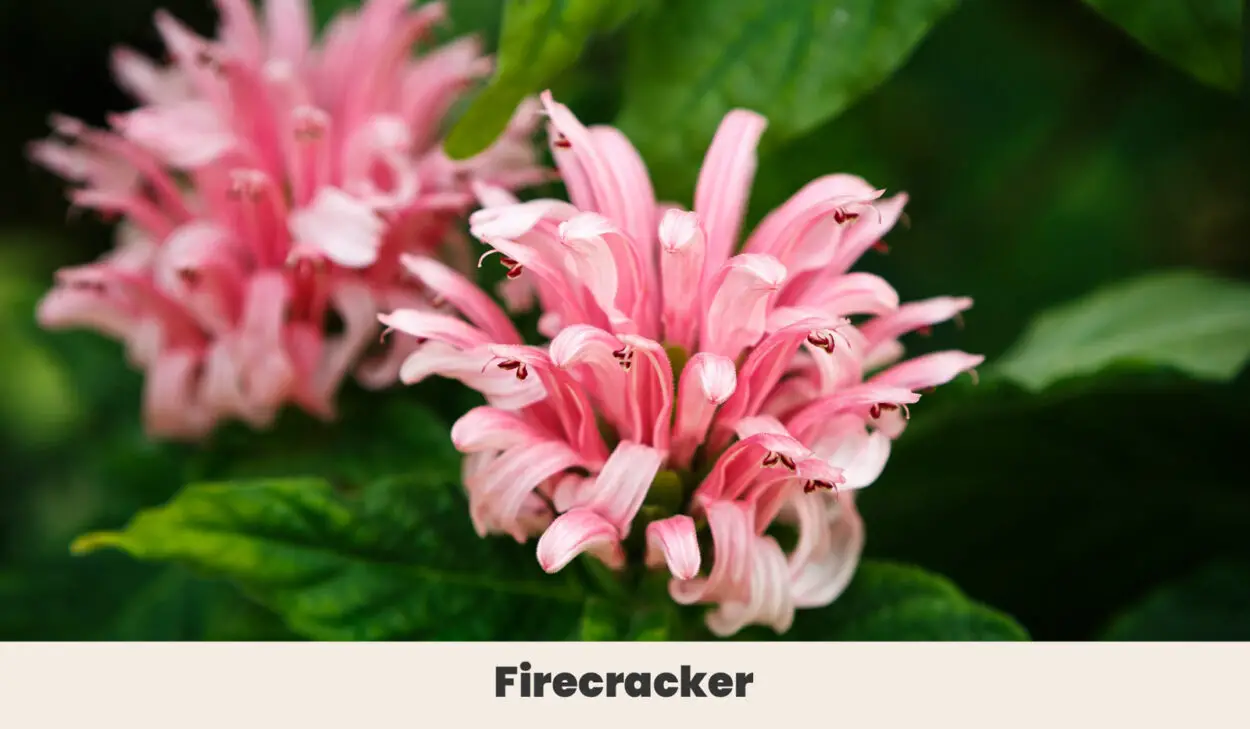
The burning bright blooms of the firecracker flower almost sizzle in radiant shades of orange and gold. This attractive shrub comes from Brazil, and it comes as a surprise to no one that hummingbirds just can’t get enough of them.
Their tubular flowers and ruddy hue are tailored to their tastes. The firecracker flower blooms right up to the edge of winter, making them an essential source of food for nectar lovers late in the year.
| Botanical Name: | Justicia floribunda |
| Growth Rate: | Moderate |
| Native Range: | Brazil |
| Hardiness Zones: | 9 to 11 |
| Soil Needs: | Will grow in most types in drainage needs are met |
| Exposure: | Partial shade |
| Blooming Period: | Spring to fall |
4. Fivespot (Nemophila maculata)

Pinstriped and spotted, there’s something almost formal about the delicate blossoms of the Fivespot. It’s an American wildflower, a lively low-growing annual that produces clusters of foot-high lowers through spring and early summer.
It prefers cool conditions and will self-seed if left to its own devices, producing meadows of nodding blooms. It can easily form long-lasting colonies over time, an enduring treat in a wildflower garden.
| Botanical Name: | Nemophila maculata |
| Growth Rate: | Fast |
| Native Range: | California |
| Hardiness Zones: | 8 to 10 |
| Soil Needs: | Prefers sandy, well-draining soils but will tolerate most types of drainage needs are met |
| Exposure: | Full sun to full shade |
| Blooming Period: | Late winter to early spring |
5. Fire pink (Silene virginica)

Fire pink is another bright red bloomer beloved by hummingbirds. Their star-shaped scarlet blooms are so tailored to the birds they look almost like commercial hummingbird feeders. They’re very easy to grow, so if you have a soft spot for tiny hummers it’s a snap to get them growing in a bright corner or bed.
The plant also tends to be quite sticky, a tactic to discourage insect pests that earns them their other common name of ‘catchfly’. They’re considered an ecologically vulnerable plant in their native range, so planting them helps the fire pink along with those creatures that enjoy its taste.
| Botanical Name: | Silene virginica |
| Growth Rate: | Fast |
| Native Range: | Central and eastern United Stats |
| Hardiness Zones: | 4a to 8b |
| Soil Needs: | Will tolerate most soil types |
| Exposure: | Full sun to partial shade |
| Blooming Period: | Spring to summer |
6. False rue anemone (Enemion biternatum)
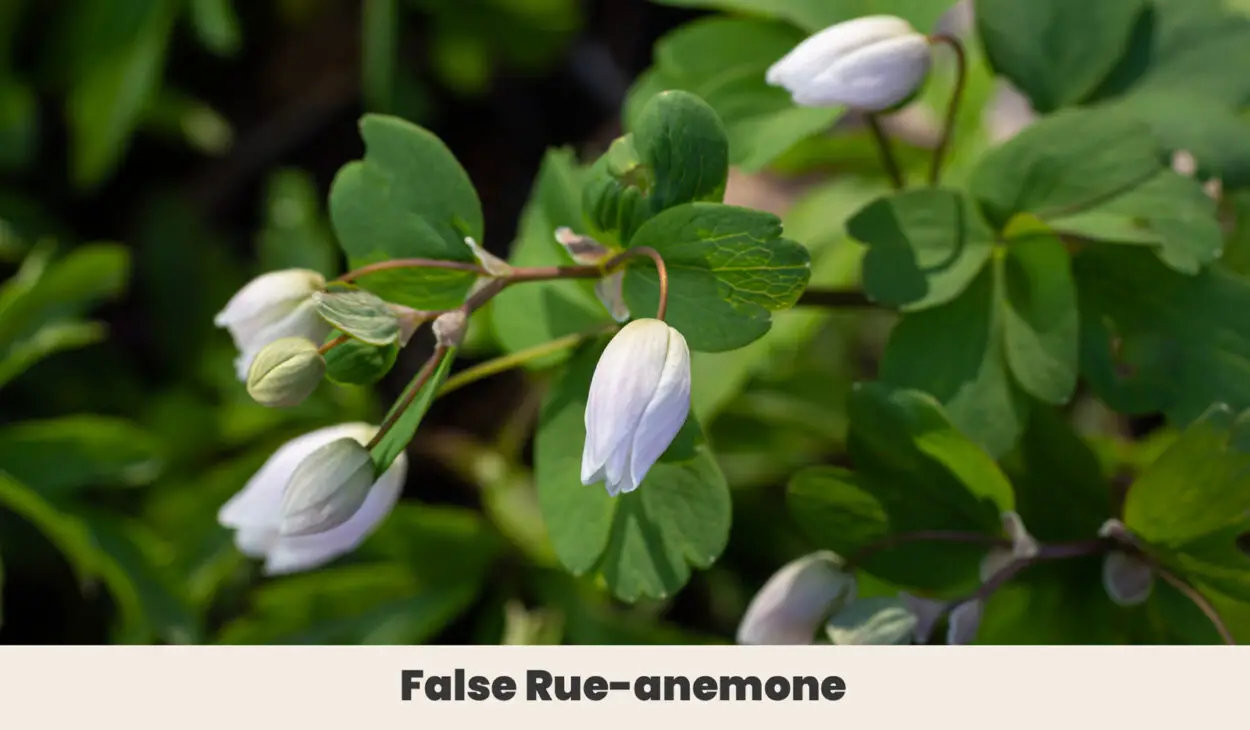
The False Rue-anemone is a sweet, delicate wildflower that is often confused with a couple of its close cousins, the wood anemone or the rue anemone. All three of these American natives produce similar flowers, with soft white petals that gently cup a hidden heart.
It’s much of a muchness, as all are just as lovely when featuring a well-shaded wildflower garden. The false rue anemone is one of the first flowers to bloom in its native range, often forcing its fragile flowers through the snow in a display of surprising vigor.
| Botanical Name: | Enemion biternatum |
| Growth Rate: | Fast |
| Native Range: | Eastern United States |
| Hardiness Zones: | 3 to 8 |
| Soil Needs: | Organically rich, moist loams |
| Exposure: | Partial shade |
| Blooming Period: | Early spring |
7. False indigo (Baptisia alba)
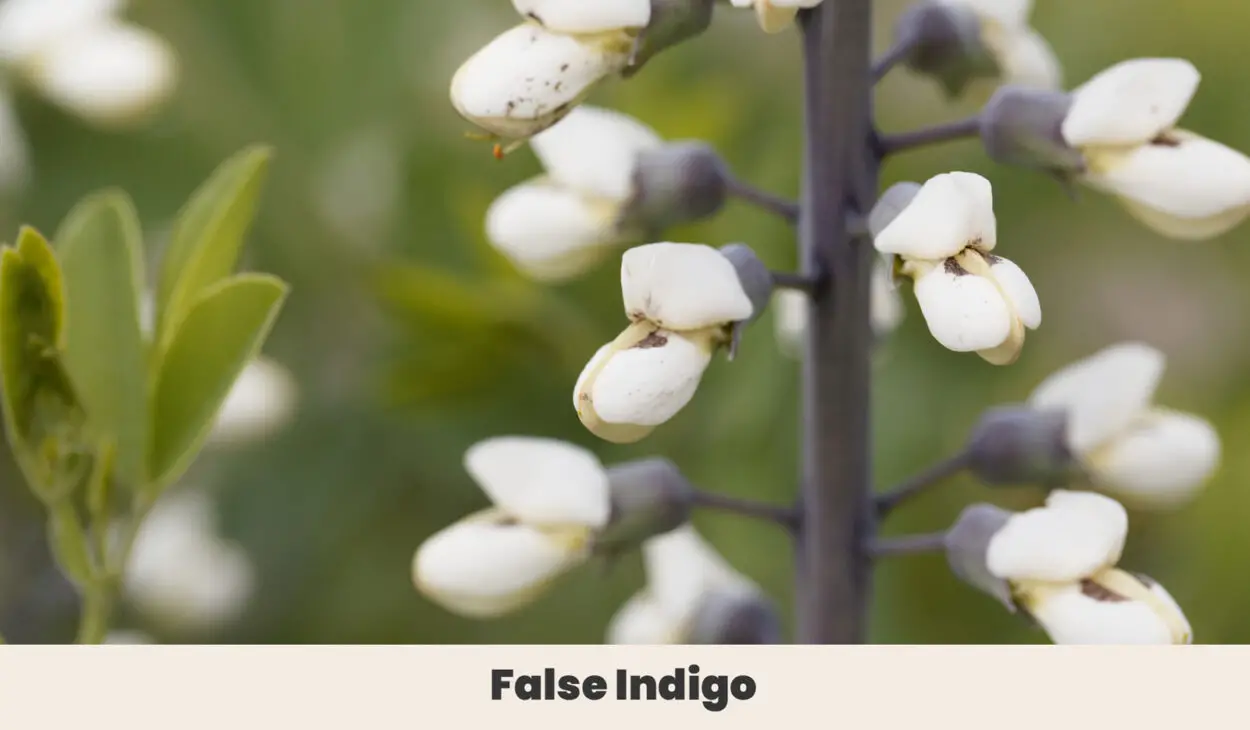
The False Indigo is a spectacular native shrub, capable of producing massive spikes covered in delicate flowers that reach upwards of a foot and a half long. They don’t have much fragrance but are very attractive to bumblebees all the same.
It’s a type of wild legume, and as such fixes nitrogen into the soil. As a result, they fertilize the soil around them as they grow, making them a valuable addition to wildflower meadows and butterfly gardens alike.
| Botanical Name: | Baptisia alba |
| Growth Rate: | Fast |
| Native Range: | Eastern United Stats |
| Hardiness Zones: | 3 to 10 |
| Soil Needs: | Tolerates most soil types |
| Exposure: | Full sun |
| Blooming Period: | Spring to summer |
8. Foxglove (Digitalis purpurea)

Foxgloves are a romantic favorite, a staple of European-style cottage gardens. They’re valued for their tall spires of purple, pink, and white bell blooms, dappled and tall, a popular pitstop for buzzing bees and fluttering butterflies.
The foxglove has a mysterious history, with tales of its potent compounds being used for both nefarious and beneficial purposes. While it has been associated with harmful intentions in the past, its properties have also been explored by professionals for potential therapeutic uses.
| Botanical Name: | Digitalis purpurea |
| Growth Rate: | Slow |
| Native Range: | Western Europe |
| Hardiness Zones: | 4 to 9 |
| Soil Needs: | Tolerates most soils if moisture needs are met |
| Exposure: | Full sun to partial shade |
| Blooming Period: | Spring to summer |
9. Fairy Duster (Calliandra eriophylla)

The Fairy Duster is a fairly plain desert shrub, often described as ‘straggly’ or ‘gangly’. Come spring those otherwise uninspiring branches burst into a profusion of feisty pop-pom-shaped candy-pink flowers.
They’ll often surprise with a second flush after fall rains, a cheeky late-season delight. A fairy duster bush or two is a quirky choice for water-wise gardens in warm areas and can provide a pitstop for otherwise thirsty insects and nectar-loving birds.
| Botanical Name: | Calliandra eriophylla |
| Growth Rate: | Slow |
| Native Range: | Southwestern United States and Mexico |
| Hardiness Zones: | 7 to 11 |
| Soil Needs: | Well-draining sandy soils |
| Exposure: | Full sun |
| Blooming Period: | Spring |
10. Four O’clock (Mirabilis jalapa)
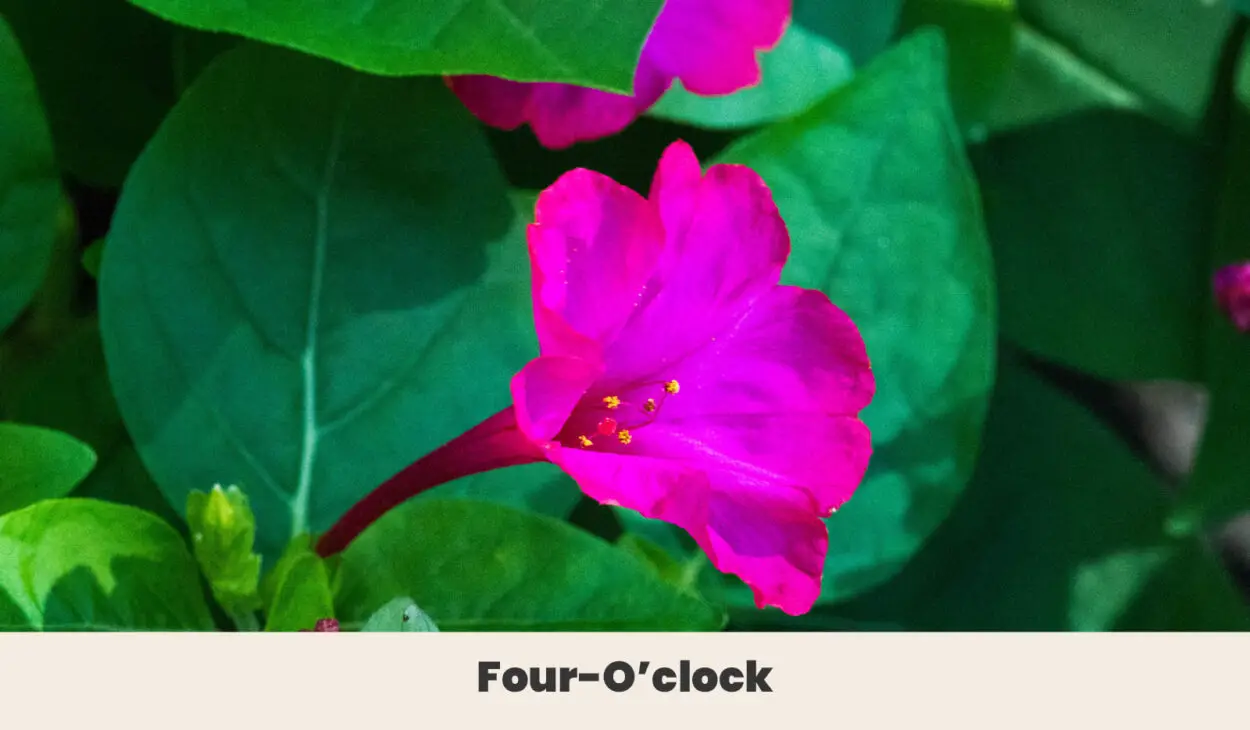
Also known as the marvel of Peru, the four o’clock’s brightly colored blossoms pop open with almost clockwork precision each afternoon. They open late to court hummingbirds and moths, blooming all night long and only closing come morning.
Commercial cultivars are available in a bewildering range of colors, from bright reds and scarlet through to pink, purple and variegated varieties. These remarkable plants will quite often feature many different colored flowers all at once on the same plant.
| Botanical Name: | Mirabilis jalapa |
| Growth Rate: | Fast |
| Native Range: | Mexico and Central America |
| Hardiness Zones: | 9a to 10b |
| Soil Needs: | Organically rich, well-draining soils of most types |
| Exposure: | Full sun |
| Blooming Period: | Spring to fall |
11. Forsythia (Forsythia)
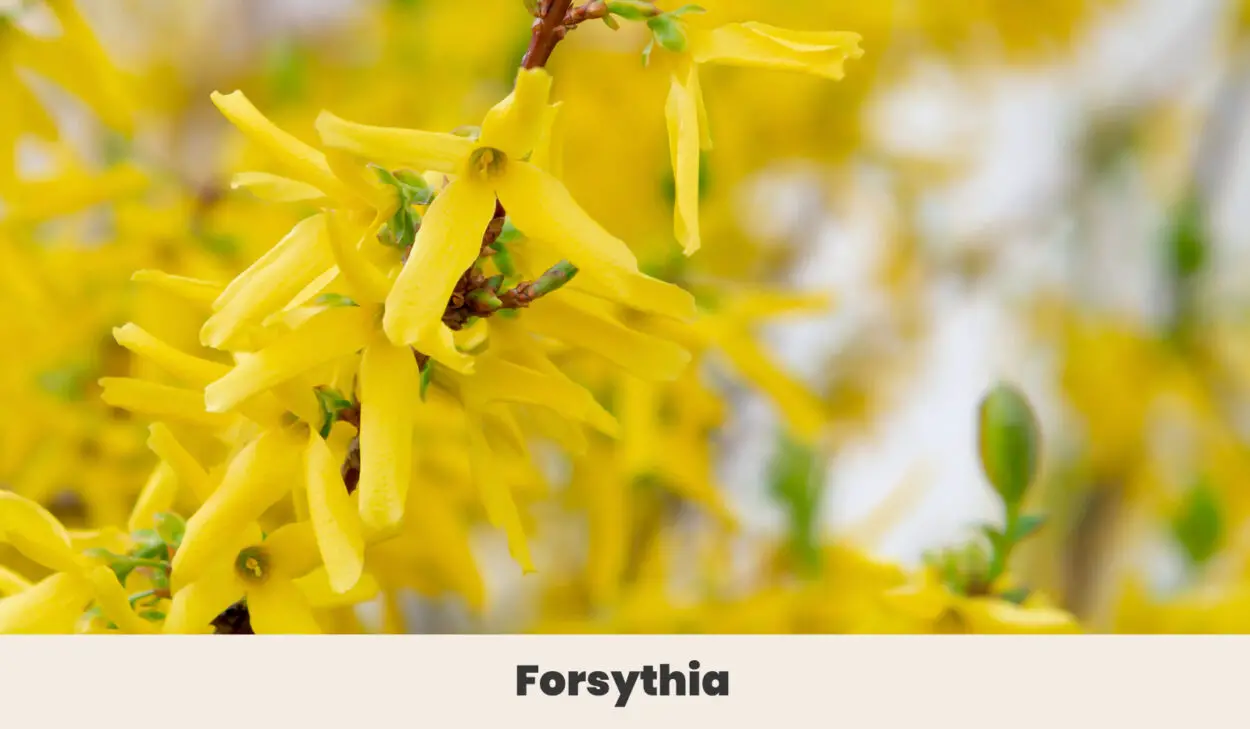
A Forsythia in full spring display is a shimmering mirage of gold, every branch and twig decorated in radiant yellow flowers. These early flowers are not just spectacular, but provide vital early food for pollinators.
They’re a diverse group of shrubs, with small varieties sporting compact growth of no more than three feet to real monsters that tower at ten feet tall and just as wide. They are spectacular when planted as screens or hedges, turning the whole world gold when they bloom.
| Botanical Name: | Forsythia |
| Growth Rate: | Fast |
| Native Range: | China and Korea |
| Hardiness Zones: | 3b to 8 |
| Soil Needs: | Moist, well-draining soil of most types |
| Exposure: | Full sun |
| Blooming Period: | Early spring |
Final Thoughts
First and foremost, flowers of all flavors and fragrances are fantastic for foragers and floral fanciers alike. Feature your favorites in fields of fabulous fancies, and feel the freedom of fostering a fantasy.

